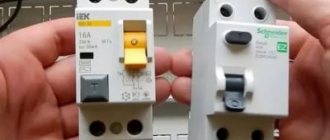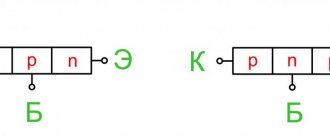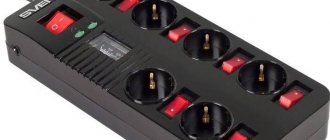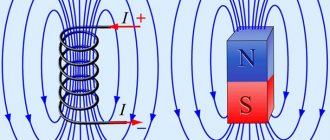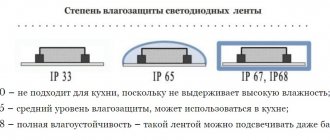The most significant difference between an LED (Light-emitting diode or LED for short) and a diode is that an LED emits light, while a regular diode only allows current to flow in one direction and opposes current in the opposite direction. Other differences between diode and LED are shown below in the comparison table.
An LED is a type of diode that is made from germanium arsenide or germanium phosphide. Germanium arsenide has the property of emitting light when its conduction band electrons give up energy to valence band holes. A diode is used in an electrical circuit to influence electric current (voltage rectification, like a valve, and so on). Their conduction band electrons give off energy in the form of heat to holes in the valence band.
comparison table
| Comparison options | LED | Diode |
| Definition | A type of diode that emits light when connected to a power source | A common semiconductor diode that conducts in only one direction |
| Material | Gaas (gallium arsenide) and Gap (gallium phosphide) | Silicon and germanium |
| Principle of operation | Converts electrical energy into light | Converts electrical energy into heat |
| Reverse breakdown voltage value | Small | High |
| Forward voltage drop | 1.2 V - 2.0 V | 0.7 V for silicon and 0.3 V for germanium |
| Applications | Emits light | Voltage rectification, that is, the conversion of alternating current to direct current |
| Where is it used? | Indicators on seven-segment displays, used as a light source | Rectifiers, voltage multipliers and others |
| Designation on the electrical diagram |
Application area
Let’s take a closer look at what infrared LEDs are and where they are used. Many of us encounter them every day without knowing it. Of course, we are talking about remote controls (RC), one of the most important elements of which is the IR emitting diode. Due to its reliability and low cost, the method of transmitting a control signal using infrared radiation has become widespread in everyday life. These remote controls are mainly used to control the operation of televisions, air conditioners, and media players. When you press a button on the remote control, the IR LED emits a modulated (encrypted) signal, which is received and then recognized by a photodiode built into the body of the household appliance. In the security industry, video cameras with infrared illumination are very popular. Video surveillance, supplemented with IR illumination, allows you to organize round-the-clock monitoring of the protected facility, regardless of weather conditions. In this case, IR LEDs can be built into the video camera or installed in its working area in the form of a separate device - an infrared spotlight. The use of high-power IR LEDs in the floodlights allows for reliable control of the surrounding area.
Their scope of application is not limited to this. The use of IR emitting diodes in night vision devices (NVDs), where they perform the function of illumination, has proven to be very effective. With the help of such a device, a person can distinguish objects at a fairly large distance in the dark. Night vision devices are in demand in the military sphere, as well as for covert night surveillance.
LED Definition
A diode that emits light during conduction is known as a light-emitting diode or LED. It deals with the "phenomenon" of electrical radiation, in which a semiconductor material emits light when exposed to an electric field.
When forward bias is applied to a semiconductor material, free electrons cross the N region and enter the P region. In the P region, holes are the main charge carriers. Free electrons are in the conduction band and holes are in the valence band, that is, electrons have a high energy level and holes have a low energy level.
Electrons and holes recombine only when they have the same energy. To recombine, electrons give up energy to holes. They provide energy in the form of photons or light. Therefore, the LED emits light when forward biased.
Semiconductor material (silicon and germanium) transfers energy in the form of heat. In this case, gallium phosphide (GaP) and gallium arsenide (GaAs) release their energy in the form of light. That is, GaAs and GaP are used to make LEDs. When reverse biased, the LED emits no light.
LEDs have many advantages - they are smaller in size, have lower power consumption, are available in different colors, require less installation space, require low DC power, and so on. The only downside to LEDs is that they are easily damaged by overvoltage or overcurrent.
Emitting Diode (LED)
An emitting diode that operates in the visible wavelength range is often called a light-emitting diode, or LED.
Let's consider the device, characteristics, parameters and designation system of emitting diodes.
Device. A schematic representation of the structure of the emitting diode is shown in Fig. 1,a, and its conventional graphic designation is in Fig. 1, b.
Radiation occurs when direct diode current flows as a result of the recombination of electrons and holes in the pn
-transition and in areas adjacent to the specified area. During recombination, photons are emitted.
Characteristics and parameters . For emitting diodes operating in the visible range (wavelengths from 0.38 to 0.78 µm
, frequency about 1015
Hz
), the following characteristics are widely used:
· dependence of radiation brightness L
on diode current
i
(brightness characteristic);
dependence of luminous intensity Iv
from diode current
i
.
Rice. 1.
The brightness characteristic for a light-emitting diode of type AL102A is shown in Fig. 2. The color of this diode is red.
Rice. 2. LED brightness characteristics
A graph of the dependence of luminous intensity on current for an AL316A light-emitting diode is shown in Fig. 3. Glow color – red.
Rice. 3.
For emitting diodes operating outside the visible range, characteristics are used that reflect the dependence of the radiation power P
from diode current
i
.
The zone of possible positions of the graph of the dependence of radiation power on current for an AL119A type emitting diode operating in the infrared range (wavelength 0.93...0.96 µm
) is shown in Fig. 4.
Here are some parameters for the AL119A diode:
· radiation pulse rise time – no more than 1000 ns
;
radiation pulse decay time – no more than 1500 ns
;
constant forward voltage at i
=300
mA
– no more than 3
V
;
constant maximum permissible forward current at t
<+85°C – 200
mA
;
· ambient temperature –60…+85°С.
Rice. 4 . Dependence of radiation power on LED current
Note that emitting diodes type ZL115A, AL115A, operating in the infrared range (wavelength 0.95 microns
, spectrum width not more than 0.05
microns
), have an efficiency of at least 10%.
Notation system light-emitting diodes involves the use of two or three letters and three numbers, for example AL316 or AL331. The first letter indicates the material, the second (or second and third) indicates the design: L - single LED, LS - row or matrix of LEDs. Subsequent numbers (and sometimes letters) indicate the development number.
Diode Definition
A diode is a two-terminal semiconductor device that is composed of n-type and p-type semiconductor material. These materials are interconnected. The diode allows current to flow in only one direction - from the anode to the cathode.
Since a diode only conducts current in one direction, it is used as a rectifier. A diode behaves like a conductor when a small voltage is applied to it, and there is a voltage drop across it just like a conductor.
Zener diode
In English literature, a zener diode is called a Zener diode. Everything is the same as the diode, in direct connection. But now we’ll only talk about the reverse switching on. In reverse switching, under the influence of a certain voltage on the zener diode, a reversible breakdown occurs, i.e. current begins to flow. This breakdown is completely normal and operating mode of the zener diode, in contrast to the diode, where when the rated reverse voltage was reached, the diode simply failed. At the same time, the current through the zener diode in breakdown mode can change, but the voltage drop across the zener diode remains practically unchanged. What does this give us? In essence, this is a low-power voltage stabilizer. A zener diode has all the same characteristics as a diode, plus a stabilization voltage Ust or nominal zener voltage is also added. It is indicated at a certain stabilization current Ist or test current. Also, the documentation for zener diodes indicates the minimum and maximum stabilization current. When the current changes from minimum to maximum, the stabilization voltage floats somewhat, but not significantly. See current-voltage characteristics.
The working area of the zener diode is indicated in green.
The figure shows that the voltage in the working area is almost constant, with a wide range of changes in the current through the zener diode. To reach the working area, we need to set the zener diode current between [Ist. min – Ist. max] using a resistor in the same way as was done in the example with the LED (by the way, you can also use a current source). Only, unlike the LED, the zener diode is switched in the opposite direction.
At less current than Ist. min the zener diode will not open, but with more than Ist. max – an irreversible thermal breakdown will occur, i.e. The zener diode will simply burn out.
Main differences between LED and diode
- A diode is a semiconductor device that conducts current in only one direction. While LED is a type of diode that emits light.
- The diode is made of a semiconductor material, and the electrons of this material give off their energy as heat. Whereas, LED is composed of gallium arsenide and gallium phosphide, whose electrons emit light when energy is transferred.
- A diode converts alternating current into direct current, whereas an LED converts voltage into light.
- A diode has a high reverse breakdown voltage, while an LED has a low reverse breakdown voltage. The breakdown voltage is the voltage at which reverse current can flow.
- In a diode, the voltage drop in the conducting state is 0.7 V in case of silicon material and 0.3 V in case of germanium. While in LED, the voltage drop in the conducting state is approximately 1.2 to 2.0 V.
- The diode rectifies alternating current while the LED displays light.
- LED is used in car headlights, traffic lights, camera flashes, medical devices and many others. While a conventional semiconductor is used in protection circuits, voltage rectifiers, and voltage multipliers.
LED and diode are made of different materials, due to which they have different properties. The diode is made of silicon or germanium, so it produces energy in the form of heat. And LED is made of gallium arsenide and gallium phosphide, which release energy in the form of light.
Characteristics and parameters of LEDs
For emitting diodes operating in the visible range (wavelength from 0.38 to 0.78 µm, frequency around, but less than 1015 Hz), the following characteristics are widely used:
- dependence of the radiation brightness L on the diode current i (brightness characteristic);
- dependence of luminous intensity iy on diode current i.
Vasiliev Dmitry Petrovich
Professor of Electrical Engineering, St. Petersburg State Polytechnic University
Ask a Question
For emitting diodes that do not operate in the visible range, characteristics are used that reflect the dependence of the radiation power P on the diode current i.
Let us depict the brightness characteristic for a light-emitting diode of type AL102A (Fig. 1.121).
The glow color of this diode is red.
Let us depict a graph of the dependence of luminous intensity on current for a light-emitting diode of type AL316A (Fig. 1.122) (glow color is red).
Let us depict the zone of possible positions (Fig. 1.123) of the graph of the dependence of radiation power on current for an AL119A type emitting diode operating in the infrared range (wavelength 0.93 ... 0.96 μm)
For a diode of type AL119A, we present some of its parameters:
- radiation pulse rise time - no more than 1000 ns;
- radiation pulse decay time - no more than 1500 ns;
- constant forward voltage at i = 300 mA - no more than 3 V;
- constant maximum permissible forward current at t < +85° C - 200 mA;
- ambient temperature - 60 ... +85° C.
Abrahamyan Evgeniy Pavlovich
Associate Professor, Department of Electrical Engineering, St. Petersburg State Polytechnic University
Ask a Question
For information about possible values of the efficiency coefficient, we note that emitting diodes of the ZL115A, AL115A type, operating in the infrared range (wavelength about 0.95 microns, spectrum width no more than 0.05 microns), have an efficiency coefficient of at least 10%.
